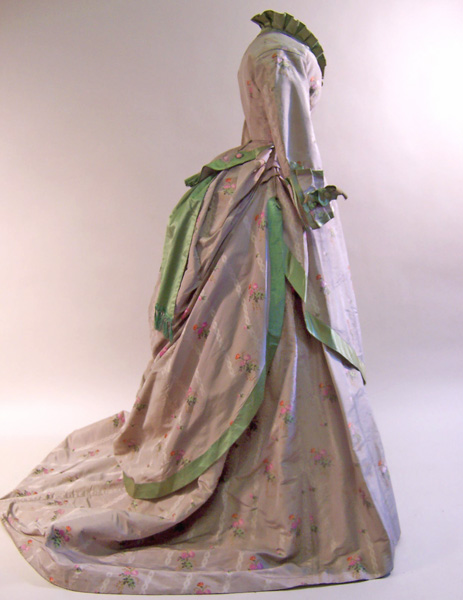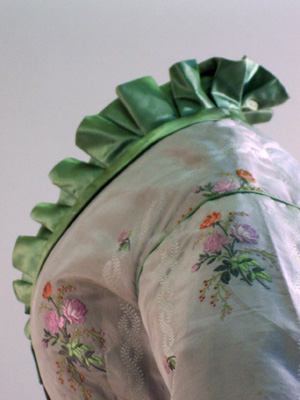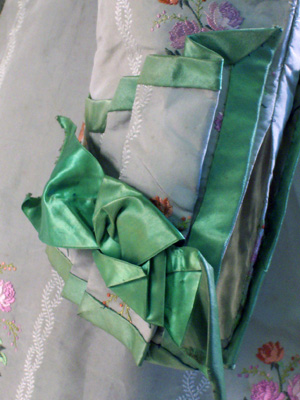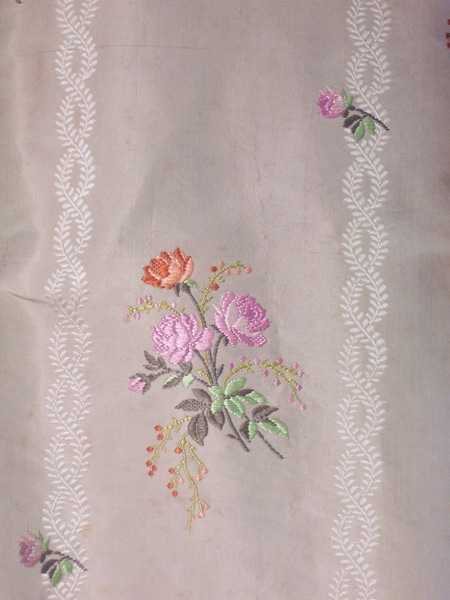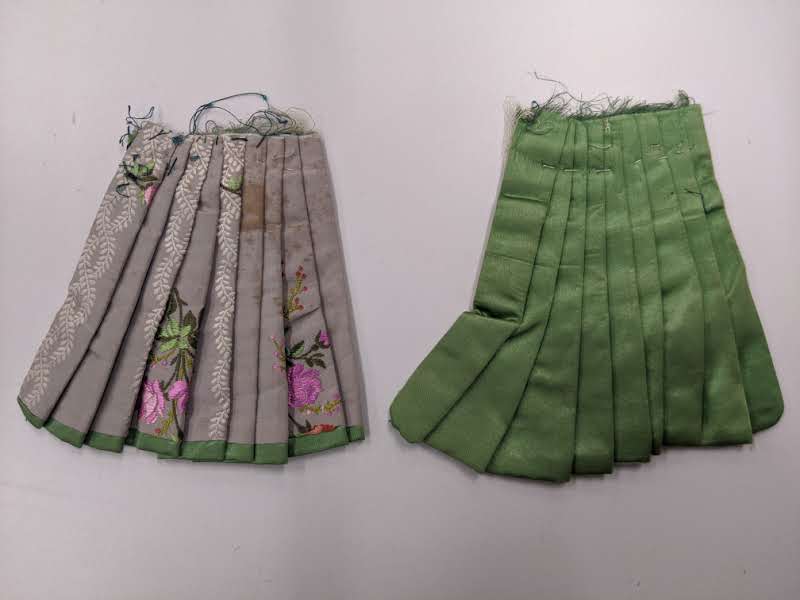dress
Summary
Pale grey corded silk figured with stripes of intertwining leaves and sprays of flowers in coloured silks. Edged with light emerald green satin ribbon. Polanaise overdress : Bodice with narrow V neck. Fastening centre front from neck to hem. Basque at back. Lined with white glazed linen. Tape ties attached centre back waist. Long sleeves. Neck edged with band of green satin and frill lined with net. Two buttons centre back waist. Two sash ends hang below basque. Green satin bow at outer cuff. Skirt : Pointed train. Waistband fastening centre back. Tape tie attached inside each side.
Display Label
In the 1870's women's dresses were often decorated with an array of pleats, fringing and ruched fabric. These trimmings could be made of ribbon or pleated flounces of the self fabric of the dress or of boldly contrasting materials and colours. If lace was applied, it was often as a thin edging. Widely available from the 1860's, the domestic sewing machine enabled decoration to be created cheaply and quickly. Instead of reducing the amount of time spent constructing a garment, these early sewing machines seem to have been used to create extra trimmings, layers and stitches. Although initially the upper classes favoured the trims and frills, as the sewing machine enabled the middle and labouring classes to buy reasonably priced fashionable clothes, the fashionable elite turned away from excessive trimmings which many viewed as vulgar. The selection of images shown are typical examples of ruching, fringing and pleating from dresses in the 1870's.
Object Name
dress
Date Created
1874-1876
Dimensions
Skirt (front): 106.7cm
Overdress (front): 114.3cm
Skirt (back): 160cm
Overdress (back): 165.1cm
Shoulder to waist: 36.8cm
Hem: 419.1cm
Waist: 58.4cm
accession number
1935.162
Collection Group
Place of creation
United Kingdom
Medium
Legal
© Manchester Art Gallery


